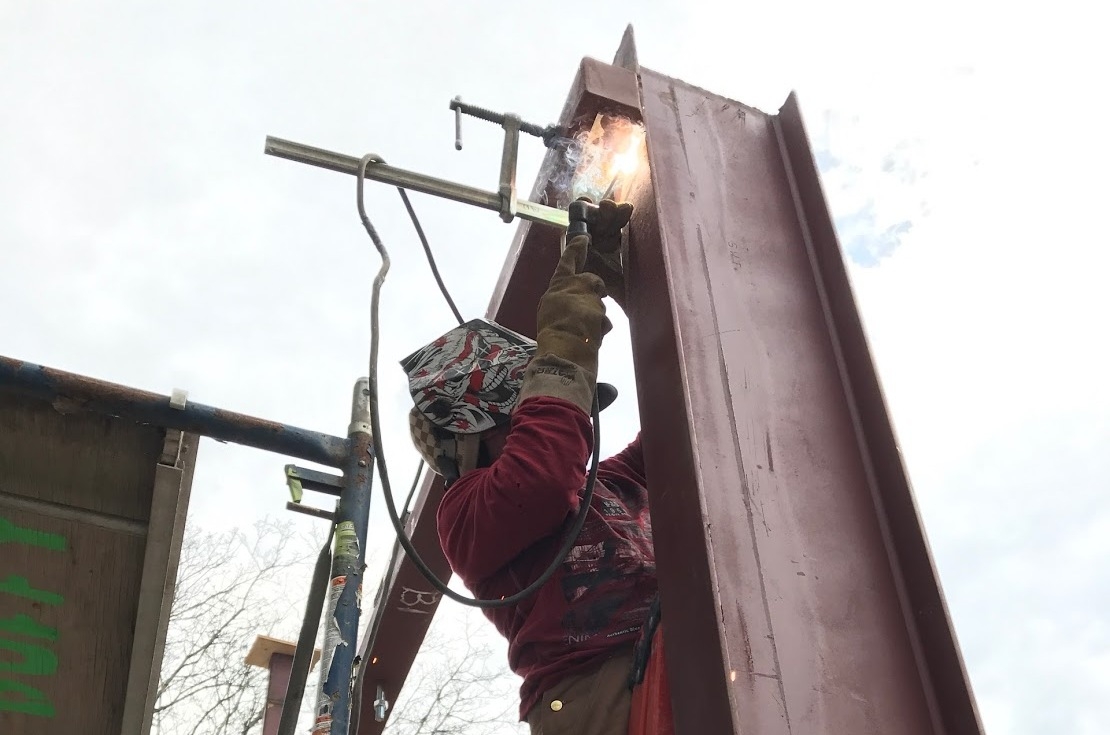
Welding is among the many industries which were significantly affected by the advancements in technology. Innovations such as automation and artificial intelligence have revolutionized legacy welding processes and techniques, making the welding process more efficient and effective. In this blog, we will dive into the welding technologies that are set to equip welders and steel structure fabricators with the tools they need to work smarter and with greater precision.
The key feature of the magnetic arc welding process lies in its powerful magnetic field produced by a magnetic coil placed near the weld zone. The magnetic coil controls and directs the welding arc, whereas the field deflects and guides the arc along a predetermined path. Magnetic arc welding is an innovative method widely used in metal fabrication by steel structure fabricators to join thick plates and to weld in narrow spaces.
In laser welding, a high-powered laser generates a beam of light which melts and fuses metals together. Laser welding produces clean and consistent weld beads thanks to its highly focused and precise beam of light. Laser welding is a versatile metal fabrication process used in various industries, such as automotive, medical, aerospace, electronics, jewelry, and tool and die manufacturing.
Explosive welding is one of the newest welding technologies where explosive energy is applied to join metals together. The method involves placing two metals in close contact with each other with a small explosive charge detonated. This process creates a powerful shockwave which propels one metal onto the other. Explosive welding is highly efficient in welding dissimilar metals (like copper and aluminum) thanks to its ability to produce uniform and a high-quality bond between the metals.
With ultrasonic welding, two metals are welded together by applying frictional heat created by ultrasonic vibrations. Two metals are placed in contact with each other, and one of them is triggered to vibrate against the other at high frequency using an ultrasonic horn. Ultrasonic welding is often chosen by mobile welders in Toronto for its ability to produce high quality welds without the need to use filler metals or flux.
Friction stir welding is a highly efficient welding method where two metals are welded together by means of applying pressure and rotating the metals at high speeds. Such a process generates friction, which causes the metals to soften and fuse, creating a strong weld bead.
Welding cobots have been known to the welding industry since 2016. Welding cobots are collaborative robots designed essentially to automate manual welding tasks. It is important to understand that welding cobots were invented to work alongside professional welders and steel structure fabricators rather than to replace them. Welding cobots provide higher throughput and allow welders to focus on performing more advanced tasks, overall increasing operational efficiency on the metal fabrication shop.
Some of the mentioned technologies are relatively new to the welding industry, while others, like welding cobots, have been around for some time and are already well known. Many businesses only begin to recognize the benefits of these welding technologies and the potential they can bring into their everyday workflow. What is certain is that these new technologies will have a profound impact on the welding industry and the way welders and steel structure fabricators work. It is clear that these welding innovations will streamline the welders’ workflow and improve the product and service quality.